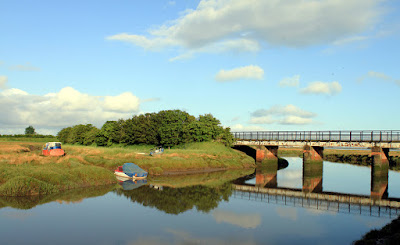No Barn Owl pics for the umpteenth time. Yet again this morning there was a Barn Owl hunting not far from the roadside but I was on double white lines along a twisty road where stopping is not recommended. I motored on and then notched up two Kestrels along Head Dyke Lane in the usual spot.
At Lane Ends I stopped to count a field of exclusively Lapwings, a post-breeding gathering of 160+ birds. Scanning through the flock there didn’t seem to be too many youngsters although the nearest one to the car was a well-fringed juvenile with a spiky hair cut.
Lapwing
At Braides a distant Buzzard sat atop a plastic wrapped bale of silage from which to watch and wait. At this time of year both Buzzards and Kestrels use these ready-made 360⁰ vantage points to launch attacks on unsuspecting mammals, reptiles, amphibians, insects and worms.
Buzzard
Following an earlier post this week I alluded to the trials and tribulations of our UK Common Buzzard. In a comment on the post my friend and fellow blogger David Gascoigne drew my attention to a passage by the nineteenth century naturalist David Henry Thoreau.
Thoreau writes about the demise of a Red-tailed Hawk from a farmer’s gun. “But alas for the youthful hawk, the proud bird of prey, the tenant of the skies. We shall no more see his wave-like outline against a cloud, nor hear his scream from behind one. He saw but a pheasant in a field, the food which nature has provided for him, and stooped to seize it. This was his offense. He, the native of these skies, must make way for these bog-trotters from another land, which never soar. The eye that was conversant with sublimity, that looked down on earth from under its sharp projecting brow, is closed; the head that was never made dizzy by any height is brought low; the feet that were not made to walk on earth now lie useless along it. With those trailing claws for grapnels it dragged the lower skies. These wings which swept the sky must now dust the chimney-corner, perchance. So weaponed, with strong beak and talons, and wings, like a war steamer, to carry them about. In vain were the brown spotted eggs laid, in vain were ye cradled in the loftiest pine of the swamp. Where are your father and mother? Will they hear of your early death before ye had acquired your full plumage, they who nursed you and defended ye so faithfully?”
Alas David, these words are all too relevant in this the 21st Century.
The farmer missed the foxes though, the family I found searching through a recently cut field at Cockerham. They too were after unsuspecting mammals, reptiles, amphibians, insects and worms. There were three foxes at first before one sloped back into the trees leaving me to get a picture of just two of them. I have mixed feelings about seeing Red Foxes in hearing and reading what damage and destruction they can wreak upon other wildlife, but at the same time rather admiring their looks and apparent charm. Am I alone?
Red Foxes
Red Fox
Stopping for the Buzzard and then watching the foxes made me late for Conder Green where the incoming tide had partly filled the creeks.
Conder Green
Common Sandpipers reach an early peak here, often in July, so a count of 13 flicking around the margins was not totally unexpected but still good to see. Apart from extra sandpipers the species and counts of the waterside were as normal by way of 70+ Redshank, 40+ Lapwing, 20+ Oystercatcher, 1 Greenshank, 2 Common Tern feeding young, 15+ Swift, 10+ Sand Martin, 1 Grey Heron, 1 Little Egret and 2 Pied Wagtail.
Pied Wagtail
“Brown jobs” amounted to 3 Reed Bunting, 1 Blackcap, 2 Whitethroat, 2 Reed Warbler and 2 Greenfinch.
I drove back to Fluke Hall for a walk along the hedgerows and the sea wall. There are still 2 Blackcap in song while 2 pairs of Whitethroats with their obvious alarm calls advertised the fact that youngsters are nearby. Along the sea wall another pair of Whitethroats fed young while 2 Reed Buntings were still in good voice.
Feeding amongst the farmer’s midden was a single Wheatear, a fairly obviously plumaged juvenile. Occasionally they arrive on the coast from the uplands in June but early July is the norm - autumn’s not far away!
Wheatear
Look in soon for more autumn birds with Another Bird Blog.
In the meantime linking to Anni's blog and Eileen's Saturday Blog.
In the meantime linking to Anni's blog and Eileen's Saturday Blog.




















































.jpeg)









.jpg)












